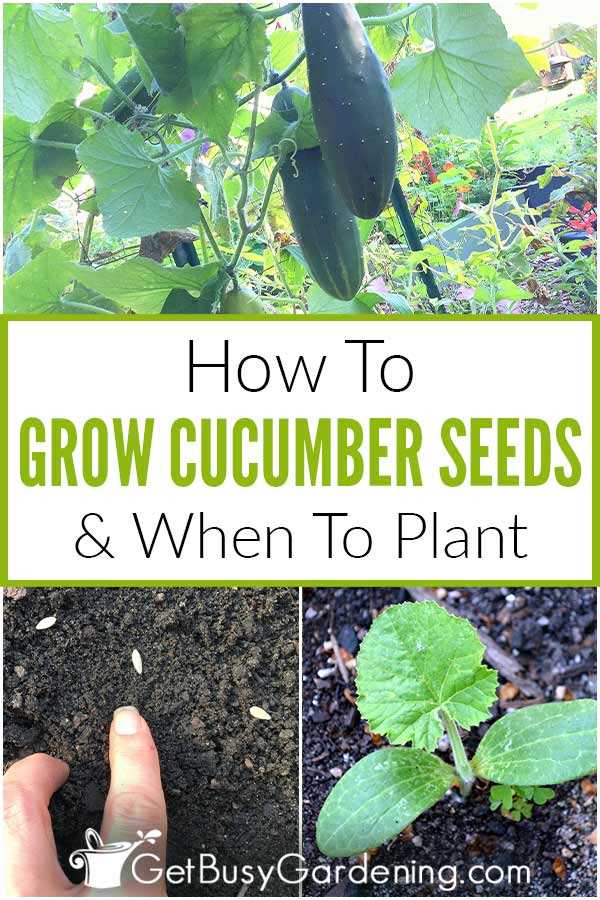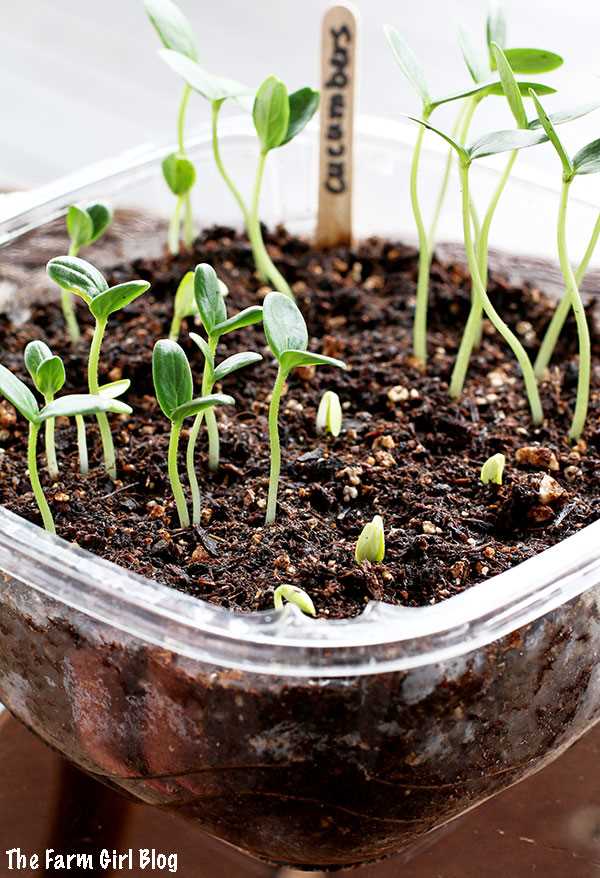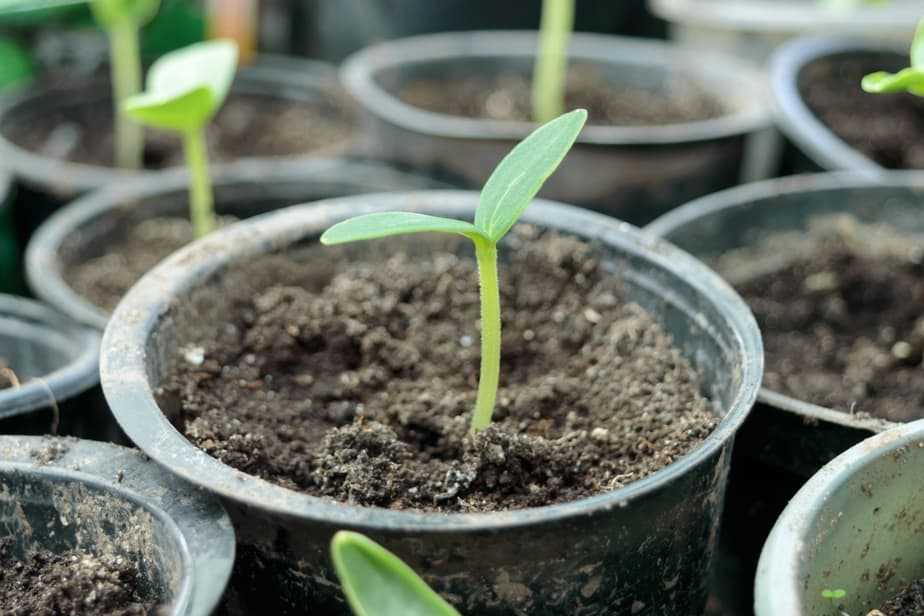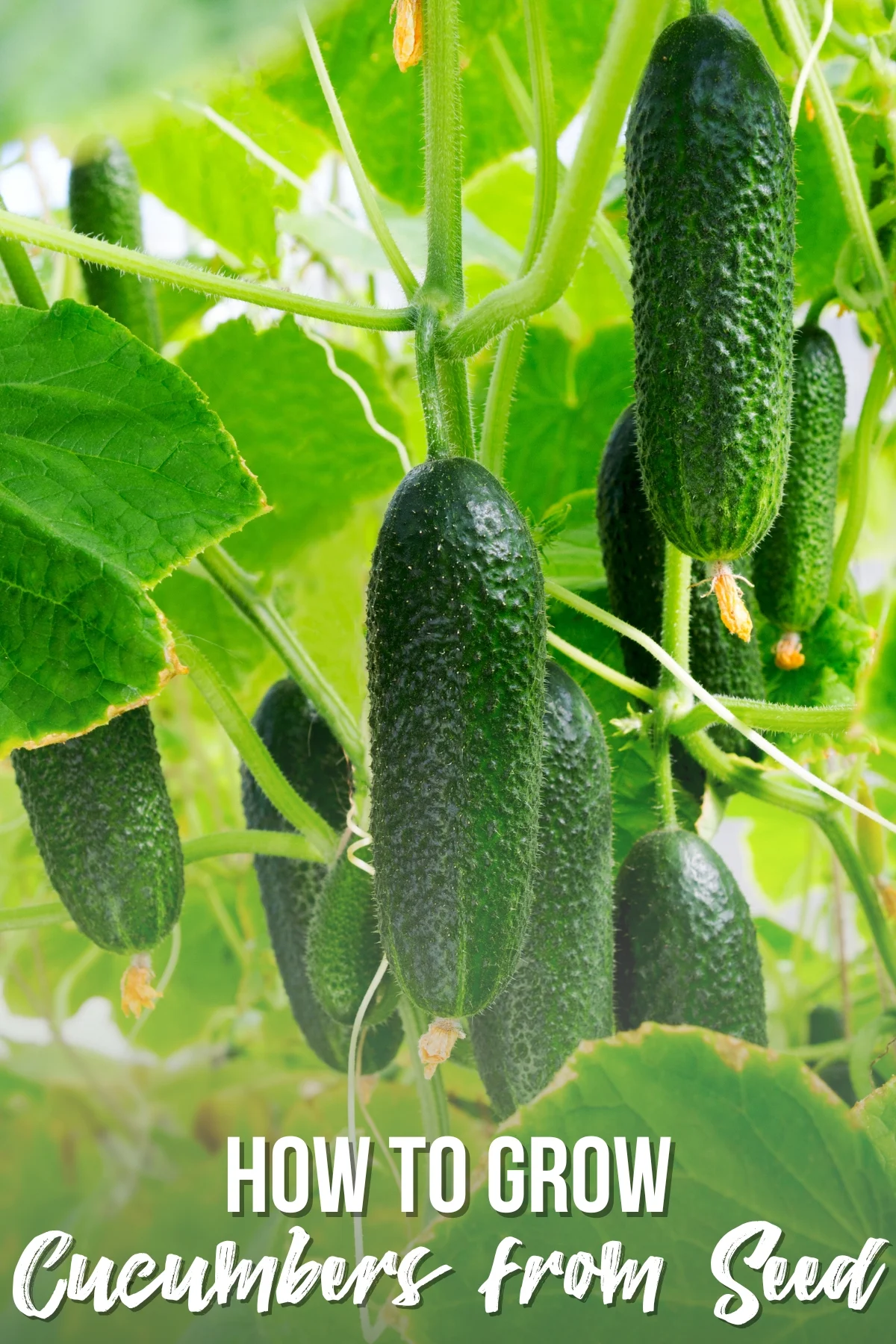- Preparing the Soil for Growing Cucumber Seedlings
- 1. Choose a Suitable Location
- 2. Test the Soil pH
- 3. Clear the Area
- 4. Add Organic Matter
- 5. Provide Adequate Drainage
- 6. Fertilize the Soil
- 7. Mulch the Surface
- Choosing the Right Cucumber Seeds for Your Garden
- 1. Cucumber variety
- 2. Seed quality
- 3. Disease resistance
- 4. Climate suitability
- 5. Growing method
- Understanding the Optimal Growing Conditions for Cucumber Seedlings
- 1. Temperature
- 2. Light
- 3. Watering
- 4. Soil Quality
- 5. Fertilizer
- 6. Air Circulation
- 7. Transplanting
- Planting the Cucumber Seeds
- 1. Prepare the Seed Trays
- 2. Sow the Seeds
- 3. Provide Optimal Growing Conditions
- 4. Transplanting Seedlings
- Providing Adequate Water and Nutrients to Your Cucumber Seedlings
- Watering:
- Nutrients:
- Protecting Your Cucumber Seedlings from Pests and Diseases
- 1. Monitor your seedlings regularly
- 2. Provide proper spacing
- 3. Remove weeds
- 4. Mulch your seedlings
- 5. Use natural pest control methods
- 6. Practice crop rotation
- 7. Water properly
- 8. Keep the garden clean
- 9. Monitor and address pest and disease problems promptly
- 10. Be patient and observant
- Transplanting Cucumber Seedlings into the Garden
- Preparing the Garden
- Transplanting Seedlings
- Watering and Mulching
- Caring for Transplanted Seedlings
- Tips for Successful Growth and Harvest of Cucumber Seedlings
- 1. Choose the Right Variety
- 2. Provide Adequate Light
- 3. Optimize Watering
- 4. Provide Adequate Air Circulation
- 5. Support the Seedlings
- 6. Monitor for Pests and Diseases
- 7. Harvest at the Right Time
- 8. Enjoy the Fruits of Your Labor
- “Question-Answer”
- What is the best time to start growing cucumber seedlings?
- What type of soil is suitable for growing cucumber seedlings?
- Should cucumber seeds be soaked before planting?
- How often should cucumber seedlings be watered?
- When can cucumber seedlings be transplanted into the garden?
- “Video” Secrets of Growing Cucumbers With Many Fruits, From A To Z, Harvest After Only 1 Month
Growing cucumber seedlings from seeds is a rewarding and fulfilling experience for gardeners. Cucumbers are a versatile vegetable that can be enjoyed fresh or pickled, and growing your own ensures a bountiful harvest of crisp and flavorful cucumbers. To successfully grow cucumber seedlings from seeds in 2023, it is important to follow a few key steps.
Choosing the right cucumber variety: There are many different varieties of cucumbers available, each with its own unique characteristics. When selecting cucumber seeds for planting, consider the space available in your garden, the climate in your region, and the desired use (eating fresh or pickling). Additionally, look for disease-resistant varieties to ensure healthier plants.
Preparing the soil: Cucumbers thrive in well-drained soil that is rich in organic matter. Before planting cucumber seeds, prepare the soil by adding compost or well-rotted manure to improve its fertility. It is also important to remove any weeds or debris from the planting area to prevent competition for nutrients and water.
Sowing the cucumber seeds:
Once the soil is prepared, it is time to sow the cucumber seeds. Cucumber seeds are relatively large and can be sown directly into the ground or started indoors in seed trays. If planting indoors, use a good quality seed starting mix and place the seeds about an inch deep. Keep the seed trays in a warm area with plenty of sunlight or under grow lights, and ensure the soil remains moist but not waterlogged.
Preparing the Soil for Growing Cucumber Seedlings
Before you start sowing cucumber seeds, it is important to prepare the soil properly to provide the best growing conditions for your seedlings. Here are some steps to follow:
1. Choose a Suitable Location
Select a sunny area in your garden that receives at least 6-8 hours of direct sunlight per day. Cucumbers thrive in warm temperatures, so make sure the location is well-drained to prevent waterlogging.
2. Test the Soil pH
Obtain a soil testing kit from a local garden center or use a pH tester. Cucumbers prefer slightly acidic soil with a pH range of 6.0 to 6.8. Adjust the pH if necessary by adding amendments like lime to increase pH or sulfur to decrease pH.
3. Clear the Area
Clear the area of any weeds, rocks, or debris that may hinder the growth of the cucumber seedlings. Use a garden rake or hoe to loosen the top layer of soil.
4. Add Organic Matter
Enhance the soil’s fertility and moisture retention capacity by adding organic matter, such as compost or well-rotted manure. Spread a layer of organic matter over the soil and mix it thoroughly using a garden fork or tiller.
5. Provide Adequate Drainage

Check the soil’s drainage by digging a small hole and filling it with water. If the water drains slowly, consider improving the drainage by adding sand or perlite to the soil.
6. Fertilize the Soil
Cucumbers are heavy feeders, so ensure the soil is rich in nutrients. Before sowing the seeds, apply a balanced fertilizer, such as a 10-10-10 or 14-14-14, according to the package instructions.
7. Mulch the Surface
Once the soil is prepared, apply a layer of organic mulch, such as straw or wood chips, to retain moisture, suppress weeds, and regulate soil temperature.
By following these steps, you can create an ideal environment for growing cucumber seedlings and increase your chances of a successful harvest.
Choosing the Right Cucumber Seeds for Your Garden
When it comes to growing cucumber seedlings, choosing the right seeds is crucial. The quality of the seeds determines the success of your cucumber crop. Here are some factors to consider when selecting cucumber seeds for your garden:
1. Cucumber variety
Cucumbers come in various varieties, each with its own unique characteristics. Some common cucumber varieties include slicing cucumbers, pickling cucumbers, and seedless cucumbers. Consider the purpose of growing cucumbers in your garden and choose a variety that suits your needs.
2. Seed quality
High-quality cucumber seeds have a higher germination rate and are less likely to carry diseases or pests. Look for certified organic or heirloom cucumber seeds from reputable seed companies. These seeds are often tested and guaranteed to be of good quality.
3. Disease resistance
Cucumbers are prone to certain diseases, such as powdery mildew and cucumber mosaic virus. Look for cucumber varieties that are resistant to common diseases in your area. Disease-resistant varieties can help ensure a successful and healthy cucumber crop.
4. Climate suitability
Cucumbers are warm-season vegetables and prefer temperatures between 70°F and 90°F. Consider your climate and choose cucumber varieties that are suitable for your region. Some cucumber varieties are better adapted to hot climates, while others are more tolerant of cooler temperatures.
5. Growing method
Consider the space and growing method you plan to use for your cucumber plants. If you have limited space, you may opt for bush or compact cucumber varieties that don’t require a lot of room. If you have a trellis or support structure, you can choose vining cucumber varieties that can be trained to grow vertically.
By considering these factors and selecting the right cucumber seeds, you can set yourself up for a successful cucumber growing season. Remember to follow the proper seedling care and cultivation practices to maximize your cucumber crop yield.
Understanding the Optimal Growing Conditions for Cucumber Seedlings

Growing healthy cucumber seedlings requires providing them with the optimal growing conditions. By understanding and implementing these conditions, you can increase the success rate of your cucumber seedlings and ensure their healthy growth. Below are the key factors to consider:
1. Temperature
Cucumber seedlings thrive best in warm temperature conditions. The ideal temperature range for cucumber seed germination is between 70°F (21°C) and 95°F (35°C). Once the seedlings have emerged, maintaining a slightly lower temperature range of 65°F (18°C) to 75°F (24°C) will promote healthy growth.
2. Light
Cucumber seedlings require plenty of light to grow and develop properly. Place them in a location that receives at least 8 to 10 hours of direct sunlight each day. If natural sunlight is limited, you can use fluorescent lights or grow lights to supplement the light requirements for optimal growth.
3. Watering
Proper watering is crucial for the healthy growth of cucumber seedlings. Keep the soil consistently moist but not saturated. Avoid overwatering as it can lead to damping-off disease and root rot. Water the seedlings at the base, avoiding wetting the leaves to prevent foliar diseases.
4. Soil Quality
Cucumber seedlings prefer loose, well-draining soil with a pH level between 6.0 and 7.0. Prepare the soil by adding organic matter, such as compost or well-rotted manure, to improve its fertility and drainage. Avoid compacted or heavy clay soils as they can impede root development.
5. Fertilizer
Once the cucumber seedlings have grown their first true leaves, you can begin fertilizing them. Use a balanced, water-soluble fertilizer with equal ratios of nitrogen, phosphorus, and potassium. Follow the manufacturer’s instructions for application rates and frequency.
6. Air Circulation
Good air circulation is essential for cucumber seedlings to prevent diseases and discourage pests. Space the seedlings adequately apart to allow for proper airflow. You can also use fans or open windows to promote air movement around the plants.
7. Transplanting
When the cucumber seedlings have developed 3 to 4 true leaves and are strong enough to handle, they can be transplanted into larger containers or directly into the garden. Be careful during the transplanting process to avoid damaging the delicate roots.
By providing the optimal growing conditions for your cucumber seedlings, you can ensure their healthy development and increase your chances of a successful harvest.
Planting the Cucumber Seeds
1. Prepare the Seed Trays
Before planting cucumber seeds, you need to prepare the seed trays. Choose trays that have drainage holes at the bottom to prevent waterlogging. Fill the trays with a seed-starting mix, which should be light and well-draining.
Moisten the seed-starting mix with water until it is evenly moist but not soggy. This will provide the right environment for the cucumber seeds to germinate.
2. Sow the Seeds
Make shallow furrows in the prepared seed trays using a pencil or your fingertip. Space the furrows about 1 inch apart to allow the cucumber seedlings enough room to grow without overcrowding.
Place the cucumber seeds in the furrows, about 1 inch apart. Cover the seeds with a thin layer of the seed-starting mix, making sure they are just lightly covered.
After covering the seeds, gently press down on the surface to ensure good seed-to-soil contact.
3. Provide Optimal Growing Conditions

Place the seed trays in a warm location with plenty of sunlight or under grow lights. Maintain a temperature between 70-75°F (21-24°C) for optimal seed germination.
Water the seed trays regularly to keep the seed-starting mix consistently moist but not overly wet. Avoid overwatering as it can lead to fungal diseases or damping-off of the seedlings.
4. Transplanting Seedlings
Once the cucumber seedlings have grown their first true leaves and are about 3-4 inches tall, they are ready to be transplanted into larger containers or directly into the garden soil.
When transplanting, be gentle with the delicate seedlings to avoid damaging their roots. Make a hole in the soil or container large enough to accommodate the seedling and its root system.
Place the seedling in the hole and fill in the soil around it, gently firming it to secure the plant. Water the seedling thoroughly after transplanting to help it establish in its new environment.
Providing Adequate Water and Nutrients to Your Cucumber Seedlings
Proper watering and nutrient management are essential for the healthy growth of cucumber seedlings. Cucumbers require consistent moisture and a balanced supply of nutrients to thrive. Here are some guidelines for providing adequate water and nutrients to your cucumber seedlings:
Watering:
- Consistent moisture: Cucumber seedlings need consistent moisture to grow properly. Avoid letting the soil dry out completely between waterings, as this can stress the seedlings.
- Frequency of watering: Water your cucumber seedlings regularly, aiming to keep the soil evenly moist. This usually means watering every 2-3 days, depending on the weather and the moisture retention capacity of your soil.
- Method of watering: It is best to water cucumber seedlings at the base rather than from above. This helps minimize the risk of fungal diseases and keeps the foliage dry.
- Avoid overwatering: While cucumber seedlings require consistent moisture, overwatering can be detrimental. Excess water may lead to root rot and other issues. Monitor the soil moisture regularly and adjust your watering routine accordingly.
Nutrients:
- Soil preparation: Before planting your cucumber seeds or transplanting seedlings, prepare the soil by enriching it with organic matter, such as compost or well-rotted manure. This will provide a good foundation of nutrients for the growing plants.
- Fertilizer application: Cucumber seedlings benefit from regular fertilization. Use a balanced fertilizer with equal amounts of nitrogen, phosphorus, and potassium (NPK). Apply the fertilizer according to the package instructions, usually every two weeks.
- Additional nutrients: Cucumber seedlings may require additional nutrients, such as calcium and magnesium, to prevent nutrient deficiencies. You can incorporate these nutrients into the soil through the use of specific fertilizers or by adding amendments like crushed eggshells or Epsom salt.
Remember to monitor your cucumber seedlings closely for any signs of nutrient deficiencies or water stress. Adjust your watering and fertilization practices accordingly to ensure healthy and vigorous growth.
Protecting Your Cucumber Seedlings from Pests and Diseases
When growing cucumber seedlings from seeds, it is important to protect them from pests and diseases that can hinder their growth and development. Here are some tips to help you keep your cucumber seedlings healthy:
1. Monitor your seedlings regularly
Regularly inspect your cucumber seedlings for any signs of pests or diseases. Look for chewed leaves, wilting, discoloration, or any unusual growth. Early detection is key to preventing the spread of pests and diseases.
2. Provide proper spacing
Overcrowding can create favorable conditions for pests and diseases. Make sure to provide enough spacing between your cucumber seedlings to allow for proper air circulation. This will help prevent the spread of diseases and make it easier to spot and remove pests.
3. Remove weeds
Weeds can harbor pests and diseases that can attack your cucumber seedlings. Regularly remove any weeds that may appear near your seedlings to minimize the risk of infestation.
4. Mulch your seedlings
Applying a layer of organic mulch around your cucumber seedlings can help prevent the growth of weeds and create a barrier against pests. Mulch also helps retain moisture in the soil and regulate temperature, providing a healthy environment for your seedlings.
5. Use natural pest control methods
Avoid using chemical pesticides as they can be harmful to your plants and the environment. Instead, opt for natural pest control methods such as companion planting, using insect-repelling plants, or making homemade organic sprays.
6. Practice crop rotation
Do not plant cucumbers or any other closely related plants in the same spot every year. Crop rotation helps disrupt pest and disease cycles, reducing the chances of infestation.
7. Water properly
Overwatering or underwatering can weaken your cucumber seedlings and make them more susceptible to pests and diseases. Water your seedlings consistently, keeping the soil moist but not waterlogged. Ensure proper drainage to prevent waterlogging.
8. Keep the garden clean
Remove any fallen leaves or debris around your cucumber seedlings as they can attract pests and provide hiding places for diseases. Regularly clean your gardening tools to prevent the spread of pathogens.
9. Monitor and address pest and disease problems promptly
If you notice any signs of pests or diseases on your cucumber seedlings, take immediate action to address the problem. Remove affected leaves or plants, and consider using organic pest control methods if necessary.
10. Be patient and observant
Growing cucumber seedlings requires patience and attention to detail. Stay vigilant, observe your plants closely, and be proactive in preventing and addressing any pest or disease issues that may arise.
By following these tips, you can protect your cucumber seedlings from pests and diseases and ensure their healthy growth and development.
Transplanting Cucumber Seedlings into the Garden
Once your cucumber seedlings have grown their second set of true leaves, they are ready to be transplanted into the garden. Transplanting is an important step in the cucumber growing process, as it allows the seedlings to establish themselves in a new environment and continue to grow and produce cucumbers.
Preparing the Garden
Before transplanting your cucumber seedlings, it’s important to prepare the garden bed. Choose a sunny spot in your garden with well-draining soil. Cucumbers thrive in warm soil, so it’s best to wait until the soil temperature has reached at least 60°F (15°C) before transplanting.
Start by removing any weeds or debris from the garden bed, as they can compete with the cucumber plants for nutrients and water. Loosen the soil with a garden fork or tiller to a depth of at least 6 inches (15 cm), as cucumber roots need room to spread out and grow.
If your soil is heavy or clay-like, you can improve its drainage and fertility by adding organic matter such as compost or well-rotted manure. Mix in a generous amount of organic matter into the top few inches of soil to provide a nutrient-rich environment for your cucumbers.
Transplanting Seedlings
When the garden bed is prepared, gently remove the cucumber seedlings from their pots or seed trays. Take care not to disturb the roots too much, as they can be delicate at this stage.
Use a trowel or your hands to dig a hole in the garden bed that is slightly larger than the root ball of each seedling. Space the holes about 12 inches (30 cm) apart to give the cucumber plants enough room to grow and spread out.
Place each seedling into its respective hole and gently backfill with soil, making sure that the stem is at the same level as it was in the pot or seed tray. Firm the soil gently around the base of the seedling to provide stability.
Watering and Mulching
After transplanting, give your cucumber seedlings a good watering to help them establish their roots in the new garden bed. Cucumbers need regular water, so make sure to water them deeply whenever the top inch of soil feels dry.
To help conserve moisture and prevent weed growth, consider mulching around the cucumber plants. Apply a layer of organic mulch, such as straw or shredded leaves, around the base of the seedlings, taking care to leave a small space around the stem to prevent rot.
Caring for Transplanted Seedlings
Once your cucumber seedlings are transplanted into the garden, continue to provide them with proper care to ensure healthy growth and abundant cucumber production. Monitor for pests and diseases, and take appropriate measures to control them if necessary.
As the seedlings grow, they will need support to climb. Install trellises or stakes in the garden bed to provide a vertical structure for the cucumber vines to cling to.
Additionally, regular fertilization is important for optimal cucumber growth. Apply a balanced fertilizer according to the manufacturer’s instructions, typically every 4-6 weeks, to provide the necessary nutrients for the plants.
By following these transplanting guidelines and providing proper care, you can successfully grow cucumber seedlings from seeds and enjoy a bountiful cucumber harvest in your garden.
Tips for Successful Growth and Harvest of Cucumber Seedlings
1. Choose the Right Variety
When selecting cucumber seeds, it is important to choose a variety that is well-suited for your growing conditions. Consider factors such as the length of your growing season, climate, and available space. There are many types of cucumbers to choose from, including slicing cucumbers, pickling cucumbers, and specialty varieties, so be sure to research and choose the one that fits your needs best.
2. Provide Adequate Light
Cucumber seedlings require at least 6-8 hours of full sunlight each day to grow strong and healthy. If you do not have access to sufficient natural light, consider using grow lights to supplement the light levels. Place the seedlings near a south-facing window or under the grow lights to ensure they receive enough light.
3. Optimize Watering
Cucumber seedlings need consistent moisture to grow properly. Be sure to water them regularly, but avoid over-watering as this can lead to fungal diseases. Water deeply and evenly, making sure the soil is moist but not waterlogged. Consider using a drip irrigation system or watering from the base to prevent wetting the foliage and causing diseases.
4. Provide Adequate Air Circulation
Cucumbers thrive in environments with good air circulation. Ensure your seedlings are well-ventilated to prevent the buildup of humidity and the possibility of diseases. If you are growing them indoors, use fans to simulate air movement or open windows to allow fresh air to circulate.
5. Support the Seedlings
As cucumber plants grow, they require support to prevent vines from sprawling on the ground. Use stakes, trellises, or tomato cages to provide support for the vines. This will help to keep the fruit off the ground and prevent rotting as well as conserve space in your garden.
6. Monitor for Pests and Diseases
Regularly inspect your cucumber seedlings for signs of pests or diseases. Common cucumber pests include aphids, cucumber beetles, and spider mites. Make use of organic pest control methods such as neem oil or insecticidal soap to control pests. Additionally, practice crop rotation and remove any infected or diseased plants to prevent the spread of diseases.
7. Harvest at the Right Time

Cucumbers are best harvested when they are young and tender. Check your specific cucumber variety for the recommended harvest time. Generally, cucumbers are ready to harvest when they reach 6-8 inches in length and have a shiny skin. Use a sharp knife or garden shears to cut the cucumbers from the vine, taking care not to damage the plant.
8. Enjoy the Fruits of Your Labor
Once you have harvested your cucumbers, enjoy them fresh in salads, sandwiches, or even pickled. Cucumbers are a versatile and refreshing addition to many dishes, so savor the flavors of your homegrown produce and share them with friends and family!
“Question-Answer”
What is the best time to start growing cucumber seedlings?
The best time to start growing cucumber seedlings is about four to six weeks before the last frost date in your area.
What type of soil is suitable for growing cucumber seedlings?
Cucumber seedlings thrive in well-draining, nutrient-rich soil. A mix of compost, peat moss, and vermiculite can create an ideal growing medium.
Should cucumber seeds be soaked before planting?
Soaking cucumber seeds in water for a few hours before planting can help to speed up germination, but it is not necessary. If you choose to soak the seeds, make sure to drain the water before planting them.
How often should cucumber seedlings be watered?
Cucumber seedlings should be watered regularly to keep the soil moist but not waterlogged. Aim to provide about 1 inch of water per week, either through rainfall or irrigation.
When can cucumber seedlings be transplanted into the garden?
Cucumber seedlings can be transplanted into the garden when they have developed at least two to three sets of true leaves and all risk of frost has passed.







